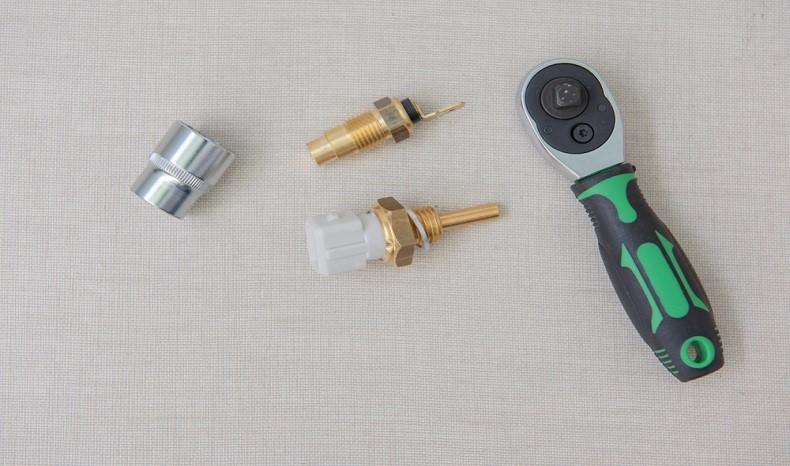Automotive temperature sensors are used to calculate temperature of engine oil, gas, air, and cabin. Temperature sensing and sensing of humidity are among the most important and well-established functions in automotive electronics. They are helpful in applications such as climate control and powertrains. These sensors are becoming extremely valuable as awareness of environmental costs, carbon foot printing, and more energy-efficient systems is rising. Power train and HVAC systems are the most significant and conventional applications followed by body electronics and alternative fuel.
COVID-19 scenario Analysis:
- Global automotive temperature and humidity sensors market has been significantly impacted by the COVID-19 outbreak. New projects throughout the world have stalled, which, in turn, have led to decline in demand for automotive temperature and humidity sensors.
- Global factories have struggled to integrate new automotive temperature and humidity sensors as workers have stayed in their homes, which disrupted the global supply chains.
- The impact of COVID-19 on this market is temporary as just the production and supply chain is stalled. Once the situation improves, production, supply chains, and demand for automotive temperature and humidity sensors are gradually going to increase.
- This COVID-19 lockdown would help companies think about more advanced automotive temperature and humidity sensors to enhance efficiency.
Top impacting factors: Market Scenario Analysis, Trends, Drivers, and Impact Analysis
Operations and cost reduction play a significant role in the manufacturing of temperature and humidity sensors. Small companies have plenty of potential to make a difference in car sensors, there is sufficient space for imagination and clever implementation of proven technology.
The global automotive temperature and humidity sensors market trends are as follows:
Growth in HVAC Applications to drive market growth in automobiles
The right amount of air conditioning at desirable temperature and humidity levels should be delivered to the target locations to ensure comfort of occupants, i.e., drivers and passengers. HVAC units and distribution systems are an integral part of the function of cabin air condition control. In addition, for safe operation of a vehicle, adequate flow delivery which requires proper demist and defrosting capabilities is required. Moreover, growing demand for luxury passenger cars in developed countries boosts the market growth. For instance, there is a huge demand in the United States for luxury cars that concentrate primarily on comfort and convenience for passengers. Continuous demand for passenger cars is present due to the rising buying power of the millennial population. Premium vehicles and utilities continue to drive light vehicle sales which contribute cumulatively to increased demand for automotive temperature and humidity sensors market during the forecast period.
Asia-Pacific is expected have the highest market share
Growth of Asia-Pacific owes to the growing automotive industry in countries such as China and India. The safety and pollution control regulations in the area are expected to significantly boost the automotive temperature and humidity sensors market during the forecast period. In addition, ongoing pollution mandates and increased demand for safety systems such as ECU have a positive impact on the Asia-Pacific automotive temperature sensor sector. Rapid urbanization has also led to increased levels of emissions, increasing demand for fuel-efficient vehicles fitted with a temperature sensor in the engine and exhaust.
Key benefits of the report:
- This study presents the analytical depiction of the global automotive temperature and humidity sensors industry along with the current trends and future estimations to determine the imminent investment pockets.
- The report presents information related to key drivers, restraints, and opportunities along with detailed analysis of the global transponder market share.
- The current market is quantitatively analyzed to highlight the global automotive temperature and humidity sensors market growth scenario.
- Porter’s five forces analysis illustrates the potency of buyers & suppliers in the market.
- The report provides a detailed global automotive temperature and humidity sensors market analysis based on competitive intensity and how the competition will take shape in coming years.
Questions answered in the report:
- Which are the leading market players active in the automotive temperature and humidity sensors market?
- What would be the detailed impact of COVID-19 on the market?
- What current trends would influence the market in the next few years?
- What are the driving factors, restraints, and opportunities in the automotive temperature and humidity sensors market?
- What are the projections for the future that would help in taking further strategic steps?
Automotive Temperature and Humidity Sensors Market Report Highlights
| Aspects | Details |
| By Type |
|
| By Vehicle Type |
|
| By Application |
|
| By Region |
|
| Key Market Players | Melexis NV, Analog Devices, NXP Semiconductors, Honeywell International, Delphi Automotive, Sensata Technologies, STMicroelectronics, Sensirion, Robert Bosch, Continental AG |
Loading Table Of Content...




